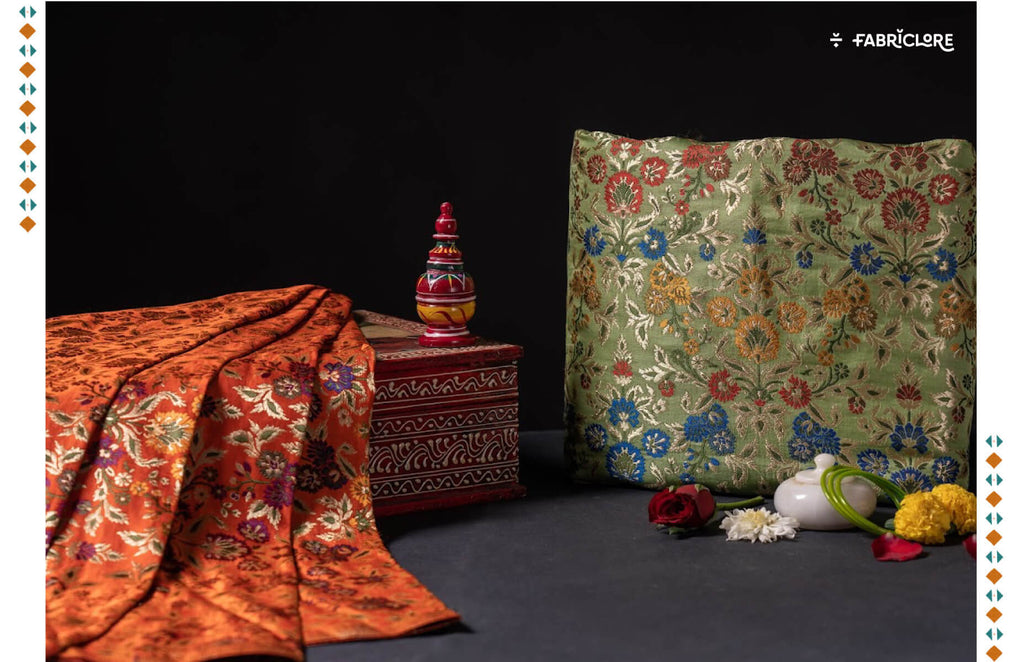What is Kinkhwab?
- Kinkhwab can be divided into two words, Kin and Khwab, where Kin means “Gold” and Khwab means “Dream”. It also means the fabric of dreams.
- It is known for the extensive zari work that makes the underlying silk fabric clearly visible beneath the sheer work done on the fabric.
- The fabric is a silk-damasked material with zar-baft on it.
- The weave on Kinkhwab fabric produces a floral design that seems embroidered.
- This beautiful fabric is popular for bridal wear.

History
- Kinkhwab fabric is the most popular fabric in the courts of Mughal and is known to be one of the most luxurious textiles in the kingdom.
- When the British started ruling over the country, it was not only used to make a variety of clothes but was also used to line the gaps between collars and slits making an extremely creative visual to the outfits.
- Over the years, specifically after the rise of the British empire within India, the Kinkhwab fabric was widely used for high-ranking British families and eventually traced back to the Indian ethnic fashion.

What Makes it Stand Out
|
Texture |
Due to the brocade design on the fabric, it is slightly textured. |
|
Shine |
As Kinkhwab is a type of silk it has a great amount of shine and luster. |
|
Fall |
The fabric gives a good drape around the body. |
|
Sheer |
Kinkhwab fabric is opaque in appearance. |
Applications & Usage
- Kinkhwab is used for making sarees, lehanagas, etc.
New Age Innovations
- The trade of brocade played a significant role in the economy of the Indian subcontinent specifically under the reign of the British throughout the 19th Century.
- Banaras, Ahmedabad, and surat were the major capitals known for producing the Kinkhwab in the country.
- Presently, in an effort to make this fabric more accessible and affordable the zari work was replaced by the threads of silk and polyester as they are the better substitute for expensive golden and silver threads.

Care Instructions
- Maintaining Kinkhwab fabric is the most essential thing, as it is tricky to maintain.
- The fabric must be wrapped either with a muslin cloth or a cotton cloth to secure it from any damage.
- Dry clean the Kinkhwab silk as it might shrink when wet.
- Do not iron the fabric on a high setting as the threads of the fabric are soft and can easily be burnt.





